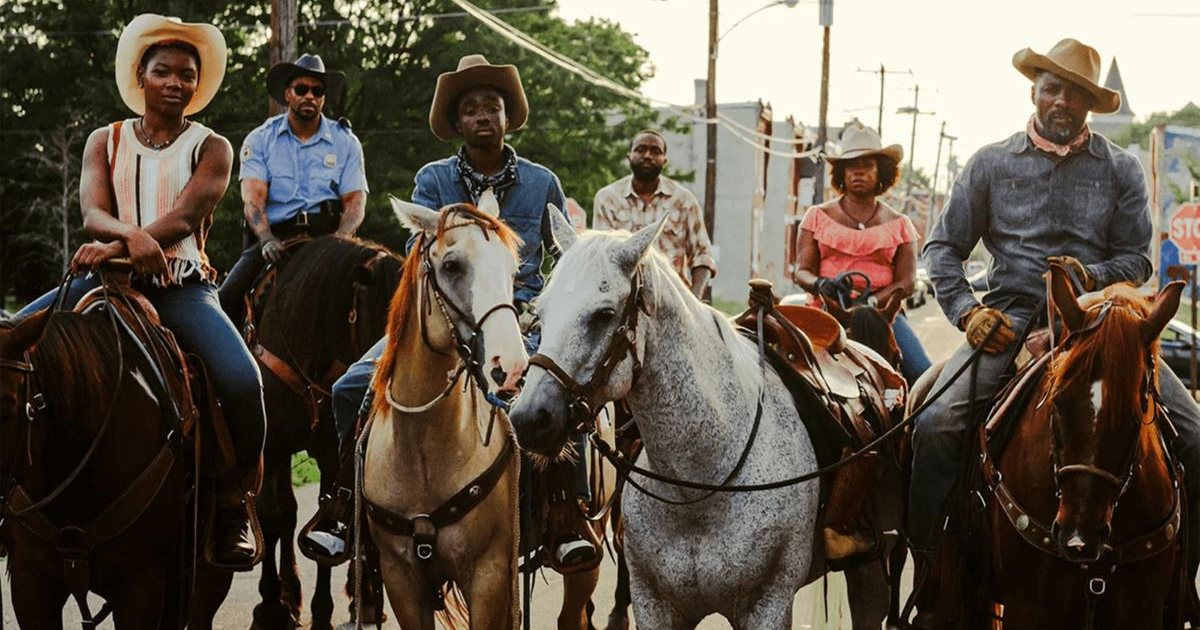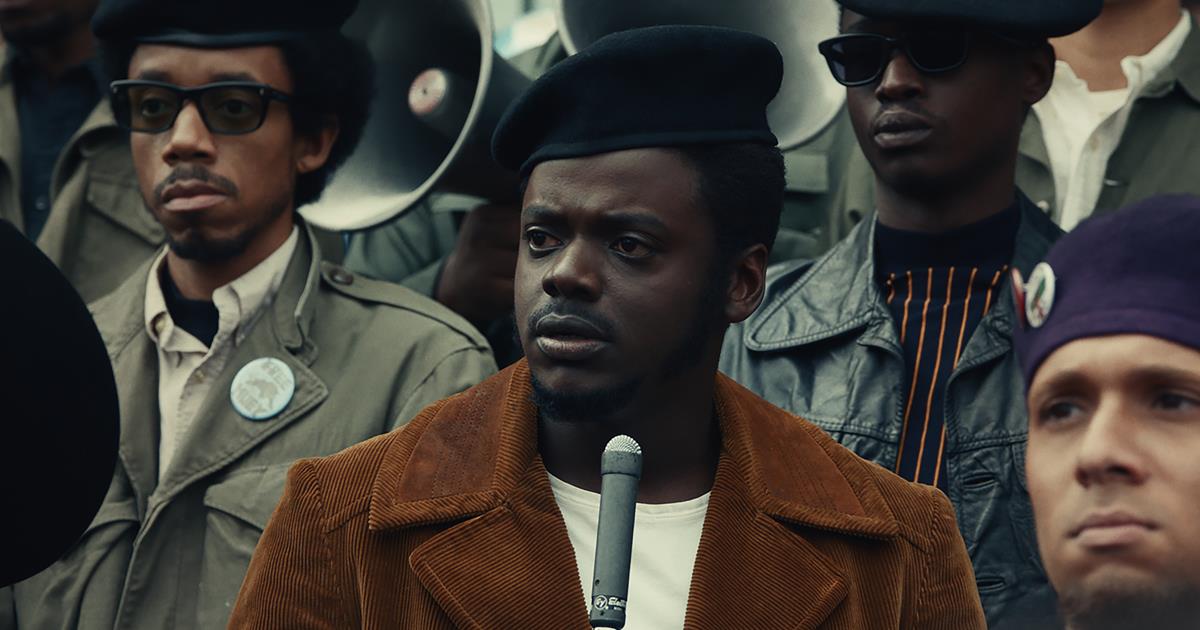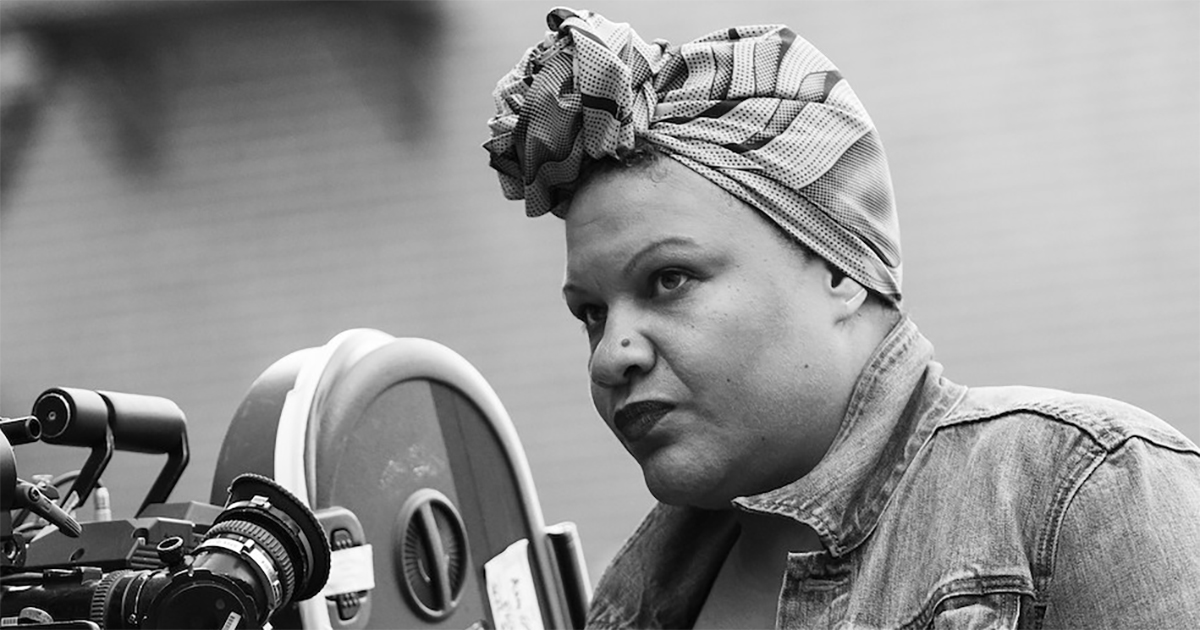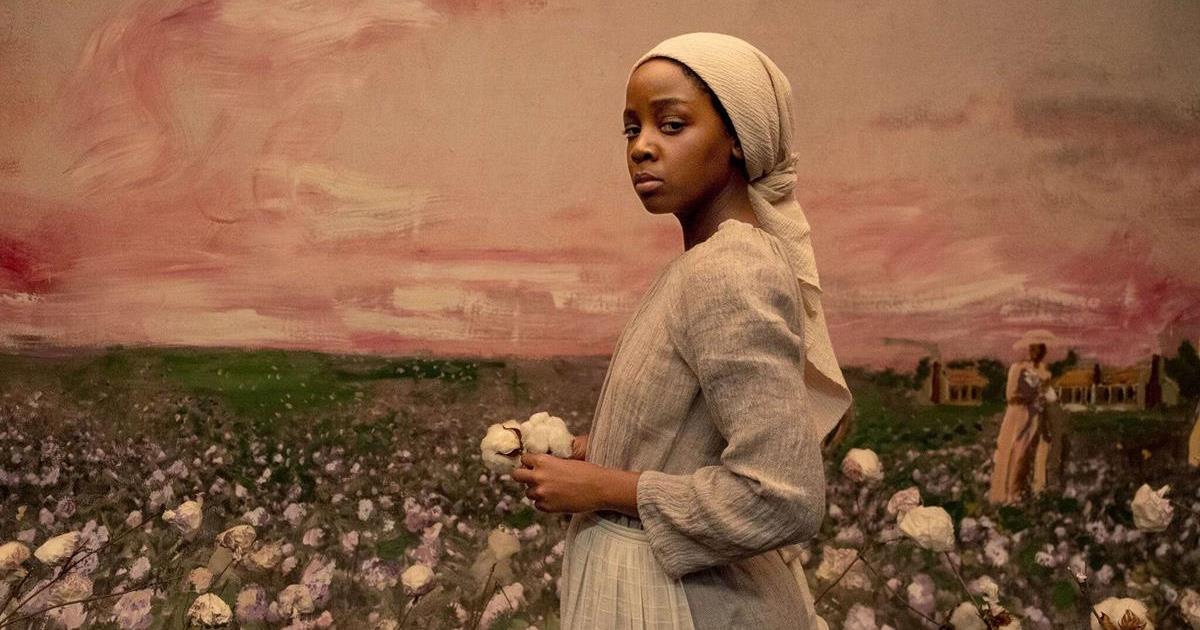
The Underground Railroad is a 10-part series based on Colson Whitehead’s Pulitzer Prize-winning 2016 novel of the same name. Shot in numerous locations across Georgia over 116 days, it follows a young woman named Cora (Thuso Mbedu) who flees slavery on a literal underground railroad.
Barry Jenkins, the Oscar-winning director of Moonlight, served as showrunner and directed all ten episodes of The Underground Railroad for Amazon Studios. The limited series was produced by Plan B, the Brad Pitt-owned production company that co-produced Moonlight, and was shot by Jenkins’ longtime collaborator, director of photography James Laxton, ASC (Moonlight, If Beale Street Could Talk).
After escaping a Georgia plantation for the rumored Underground Railroad, Cora discovers no mere metaphor, but an actual railroad full of engineers and conductors, and a secret network of tracks and tunnels beneath the Southern soil. Over the course of her journey, Cora is pursued by Ridgeway (Joel Edgerton), a bounty hunter fixated on bringing her back to the plantation she escaped; especially since her mother Mabel is the only runaway he has never caught.
As Cora travels from state to state, she contends with the legacy of the mother that left her behind and her own struggles to realize a life she never thought was possible. The change in setting that comes with almost every episode serves as a window into Cora’s state of mind. Rather than the traditional serialized structure that returns to the same world and characters with each episode, we see Cora and her landscape evolve over the course of the series.
It’s heady, fantastical stuff, captured with luscious, stylized visuals that provide an unflinching gaze on the horrors of slavery. Writing for Vox, Emily VanDerWerff describes the elements that tie together the entire conceit:
“Even as Cora is sort of traveling forward through time, she’s endlessly pursued by a slave catcher named Ridgeway… who longs to drag her back into slavery. The closer Cora gets to something like a world where Black Americans can live with freedom and dignity, the more doggedly Ridgeway pursues her. The country’s racist past always has a hand joined to its racist present, and Whitehead’s use of Ridgeway is a far more compelling exploration of this idea than any big, heartrending speech Cora could give on the matter.”
In adapting The Underground Railroad for the screen, Jenkins and his team retained and even emphasized in subtle ways the episodic structure of Whitehead’s novel. “Each episode of the series could fairly easily stand alone as its own tale, with casual viewers having only the most cursory understanding of the main characters and their situation,” VanDerWerff writes, before adding:
“This structure allows the series to be brutal without ever feeling like it’s being brutal for brutality’s sake. The first episode features some horrific images of slavery, but it picks and chooses its moments. In one sequence, Jenkins cuts between white party guests barely paying attention to a slave being whipped in front of them, to the other slaves watching the whipping, to the face of the man being whipped with the man whipping him out of focus in the background. The build of the sequence allows the viewer to prepare themselves for what they’re about to see, while also making it clear that no one should want to see it.”
READ MORE: The Underground Railroad is a towering series about the ways slavery still infects America (Vox)
Speaking to Alexandra Del Rosario at Deadline, Jenkins revealed that the episodic structure of The Underground Railroad also gave audiences a choice in how they experienced the series, something he wouldn’t have been able to do with a feature.
“The sign post for me was to be very forthright about the truth we were telling and also to have a very strong moral and ethical compass,” Jenkins said. “There’s a reason this isn’t a feature film,” he continued:
“I didn’t want to force the audience into a captive experience, they can pause, play… you can do whatever. I think what’s really beautiful about putting images into the world is that when someone’s ready to find that image, it will be there. What we all did in creating this show, I think it honored our ancestors, we were respectful, respectful of the text and respectful of the audience.”
READ MORE: ‘The Underground Railroad’ Showrunner Barry Jenkins Talks “Strong Moral And Ethical Compass” Needed To Depict Antebellum South (Deadline)
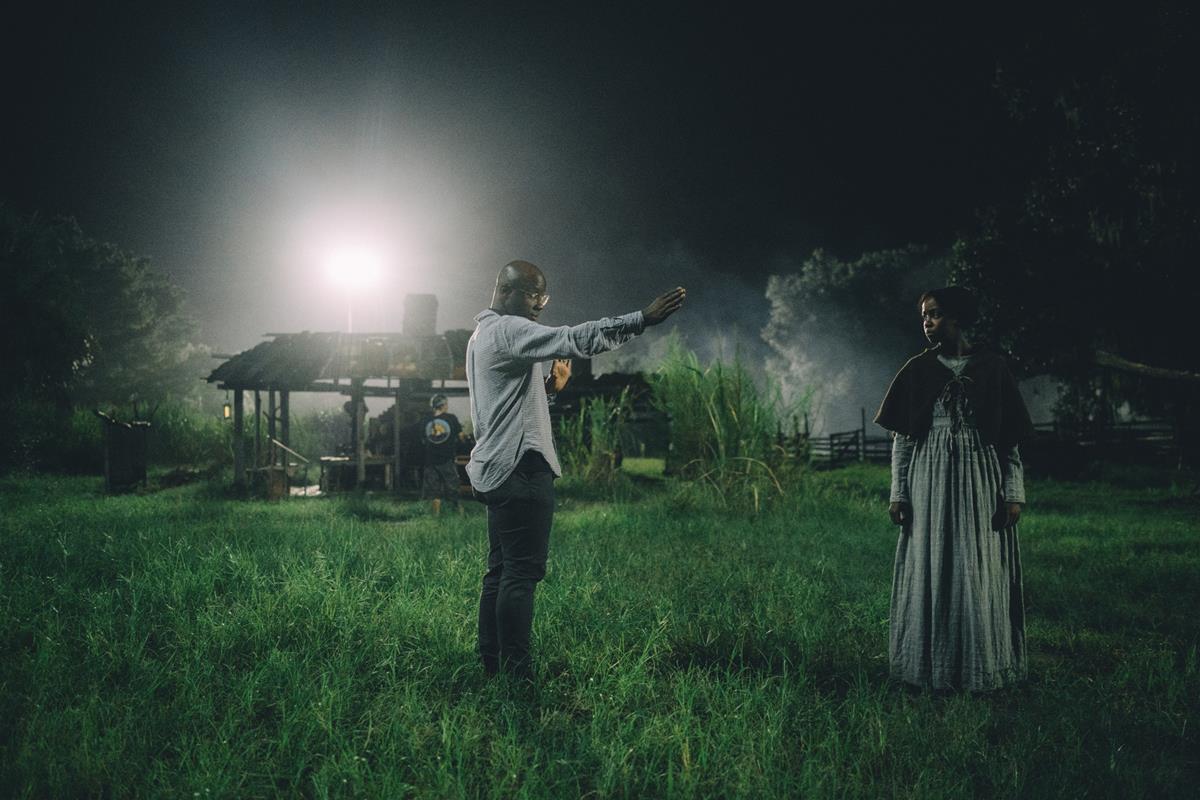
Jenkins discussed The Underground Railroad’s episodic structure further in an interview with James Mottram for the UK’s Independent. With television, he said, the viewer is control. “You get to a scene that’s too much, you can pause and fast forward through it. You can choose who you want to watch it with, and you can choose when you want to watch it.”
Nothing in The Underground Railroad was “falsified or over-sensationalized,” Jenkins told Mottram, but it was essential not to avoid the “different kind of trauma” that might come from watching scenes depicting the sickening violence inherent in slavery.
NOW STREAMING — BEHIND THE SCENES OF FAN-FAVORITE SERIES:
As the streaming wars rage on, consumers continue to be the clear winners with an abundance of series ripe for binging. See how your favorite episodics and limited series were brought to the screen with these hand-picked articles plucked from the NAB Amplify archives:
- “Severance:” Now, About Solving the Work/Life Balance…
- Entering “The Gilded Age”
- Class Is Definitely Not In Session: The Horror Delights of “All of Us Are Dead”
- “The Dropout” Is a Slow-Motion Car Crash (and We Can’t Look Away)
- The (Unavoidable) Universal Appeal of “Squid Game” Is By Design
“If we assume that we can’t look at these images, if we can’t bear witness to this brutality, we risk erasing my ancestors, and we risk this vacuum, this chasm, this cavity,” Jenkins said. “Because I can’t not tell the truth. I can’t not tell the truth.”
Yet, in reality, only one-and-a-half episodes take place on the plantation, as Jenkins points out. “We just barely scratched the surface of what this world was actually like, of how militaristic it actually was.”
READ MORE: Barry Jenkins: ‘If we can’t bear witness to brutality, we risk erasing my ancestors’ (Independent)

Making The Underground Railroad was an “irresistible opportunity” as Jenkins put it, to “re-contextualize how we view my ancestors,” he said in an interview with Amanda Lee Myers for The Associated Press.
“When this trailer came out, someone said, ‘Oh, I don’t want to see another show about slaves. I want to see positive imagery.’ And I’m like, ‘Oh, that inherently says that any imagery depicting my ancestors is negative,’” Jenkins recounted. “No, we have to really relearn how to look at these people.”
To Jenkins, enslaved Black Americans demonstrated “one of the greatest acts of collective parenting the world has ever seen,” he told Myers. “If everyone had taken up arms and decided they were going to rebel, everyone would have perished and there would have been all these children left behind,” he said. “The choice was to protect these children out of faith that at some point this thing would end and these children would go on and carry the legacy.’”
READ MORE: Barry Jenkins on his unflinching epic ‘Underground Railroad’ (Associated Press)

Despite the stylized imagery and lush visual aesthetic of The Underground Railroad, Jenkins opted for a graphic, unvarnished approach to filming the violence and cruelty the series depicts. “People say these images are so beautiful but what’s happening in these episodes is so brutal,” Jenkins remarked in an interview with Hugh Hart for the Motion Picture Association’s The Credits, going on to explain:
“But it’s beautiful while these things were happening. It would be almost irresponsible of me to remove the [natural] beauty from these happenings. It’s some attempt at verisimilitude. This is what it looks like for the characters. This is what it should look like for the audience. Instead of spending all this time trying to fight the elements, trying to fight mother nature, you start working with the current and go ‘Let the water be water.’”
The visual style of The Underground Railroad was partially inspired by the paintings by Chicago artist Kerry James Marshall and photography by Australian photographer Bill Henson, Jenkins told Hart, but there were other factors also in play:
“But really what determined the look was that in the writers’ room, we decided that each time Cora arrived in a new state, it would look and feel the way it did because it was a manifestation of Cora. That was the starting point for the aesthetic. The other thing we decided early on is that we wanted as few edits as possible. Instead of cutting to a new shot, we would create a new shot with movement of the camera, often motivated by the movement of a character, usually Cora.”
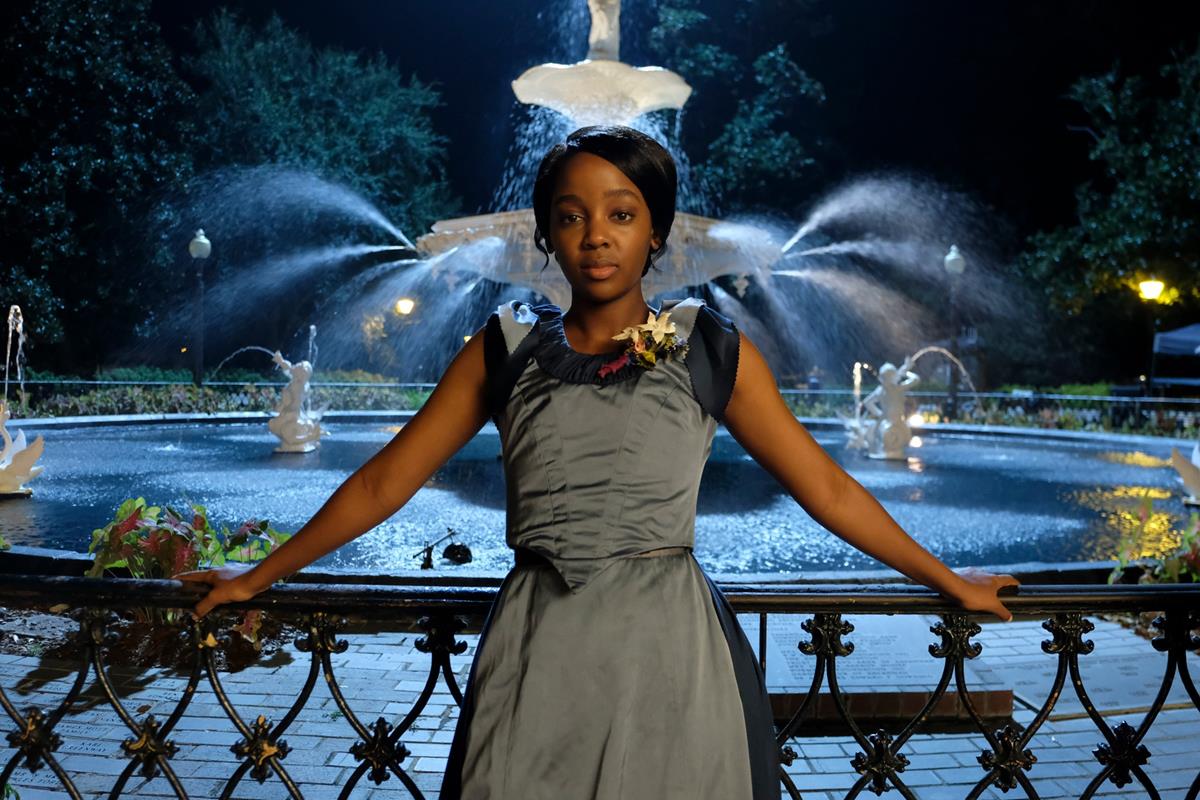
Depicting the railway cars and tracks of The Underground Railroad in a realistic fashion was also crucial for Jenkins, as he explained to Hart. “I told our production designer Mark Friedberg that it can’t be fake. I want real tracks, real trains, real tunnels. I don’t want green screen, I don’t want CGI,” he said:
“So we found a private rail network and built our tunnels above them. So much of this project was about trying to contextualize what it would be like to be my ancestors. When Thuso first came down on the tracks I told her, ‘You need to get down on the ground, and touch it, and bang on it.’ The train’s like an alien that comes down, knocks on your front door, and hands you a pepperoni pizza. That’s how strange it would be.”
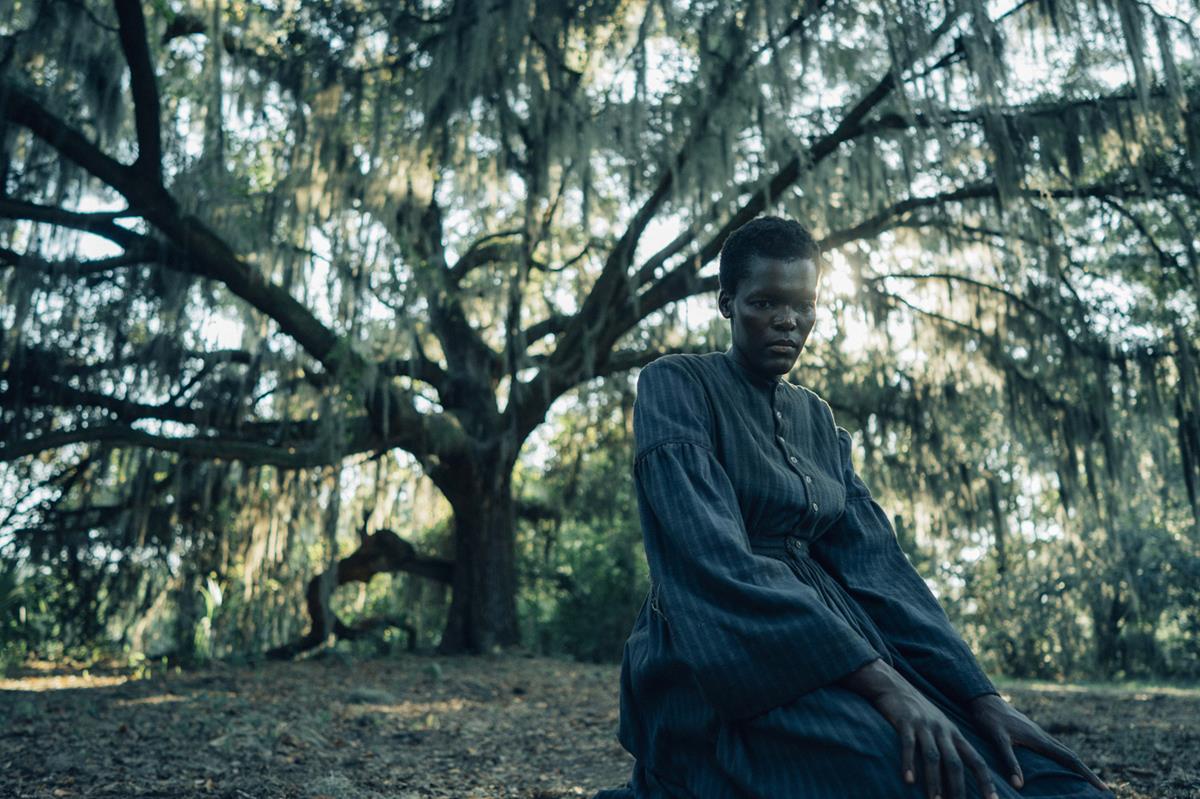
READ MORE: Director Barry Jenkins Mixes Beauty and Brutality in “The Underground Railroad” (The Credits)
Jenkins further discussed the violence portrayed in The Underground Railroad in an interview with Matt Zoller Seitz for Vulture, delving into both the ethical and practical issues of filming the horrifying torture and murder of Big Anthony in the first episode.
There is an internal logic Jenkins applied to deciding which acts of violence to show, as well as how they should be showed, and the length of time and even the distance that should be employed. “For starters, it depends on how crucial the violence is for the character, especially the main character,” he says:
“Our main character in the show, Cora, is a woman who has just given up on everything. She’s been abandoned, she’s born into slavery, she’s very bitter and angry, and she feels a bit worthless. And so when this guy comes and says, ‘We need to leave,’ she tells him no. It takes an extreme act to push her to the point where she decides, ‘You know what? Actually, yes, you’re right — we must go.’ That act was a public, brutal, horrific immolation of one man, Big Anthony. That’s why I thought it was so important to dwell on that particular incident.”
The technical aspects of shooting the gruesome sequence were “interesting,” says Jenkins. “Filming the sequence, there’s no blood, there’s no fire, of course, and the actor’s on a stunt harness. The visual effects are very good. They could have been better, but there was a point where I realized, That’s enough, we’ll stop,” he recounts.
And by “better,” Jenkins wants to be clear that he means the level of realism that could be achieved:
“The thing I wanted to be extremely real is this man is being hung up by his wrists, and he’s being attacked by this whip. And we often see these photos of the formerly enslaved, and we see the healed wounds on their back. But we’ve never been allowed to see what happens if you suspend a 300 or 250 pound man by his wrists and serrate his flesh. That’s going to do certain things to that flesh, and I have never seen those things. To understand the absolute brutality of what the system of American slavery was, I wanted to show very organically what that process would look like.”
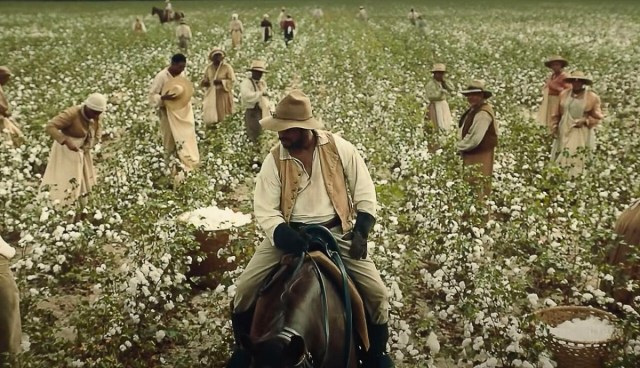
Jenkins said that he made the choice that this would be the one image that he would not turn away from. “This is going to be the place, this is going to be the time, this is going to be the one image that I’m not going to look away from,” he said. “If the audience wants to look away, they can. But I cannot allow them to deny the fact of this image.”
The director emphasizes that there are very few actual moments in The Underground Railroad when the audience sees someone being whipped. “There are only three instances of whipping in this entire show, and there’s no moment when you see a whip contact flesh and then blood comes off,” he underscores, adding, “You know, we always kinda hide the whip. We filmed that scene in a great big wide shot at night, intentionally, and on set, the first shot we did was the wide. I thought, ‘Let’s start wide. Let’s see how it feels, then figure out what else we might need for the scene.’”
After the very first take, Jenkins realized, “We’re done. That’s all we need,” he recounted. “We’re not getting any closer than this. Not at this moment.” But the question that remained for the director was, “What remains to be excavated from this image?” Because if the filmmakers were going to create this image, it had to add something to the conversation. “And then I thought, “Okay, let’s come off the acute trauma, and now let’s find the way this trauma metastasizes among this group.’”
Throughout the series, Jenkins will begin a violent scene by showing the act from a distance, or partly obscured. And then he very deliberately moves the camera to show spectators reacting to the violence.
“Because to me that’s the entire point,” Jenkins says. “That’s the point. You know, I think we have to bear witness, and we were forced to bear witness. This is how the aggrievement of one becomes a trauma shared by all.”
READ MORE: Barry Jenkins Felt His Way Through The Underground Railroad (Vulture)
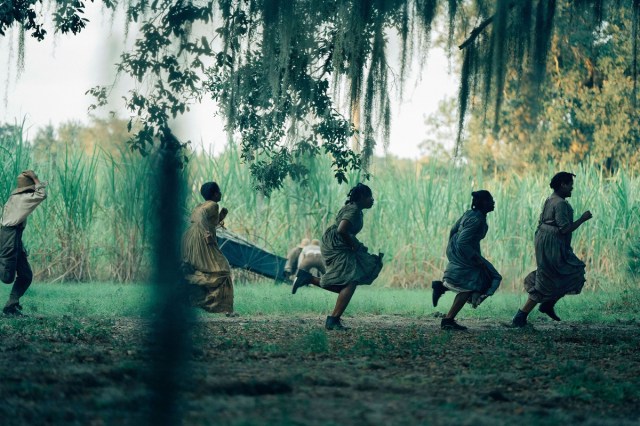
In an interview with Camonghne Felix for Vanity Fair, Jenkins described his relationship with the color blue, which permeates the director’s work, and is at least partially inspired by Marshall’s paintings.
Marshall “has a very interesting relationship [to] the color black, and with how he builds his colors with the absence of white pigment,” Jenkins told Felix. For The Underground Railroad, the production team used a process for building the shades of blue, as an artist might, that would be incorporated into the moonlight. As the series continues, “it sort of evolves,” he said.
“In the first episode of the Amazon series, the blue moonlight inks the night and falls around the main character, Cora, and the young Black child she attempts to protect, as an expected but horrifying violence occurs,” Felix writes:
“You understand immediately that the color has shown up as a guide to help us truly understand the physical cost of slavery on African bodies, to understand the cost of Black defiance and the inhumanity of white domination. Jenkins sees Black people, and while episode one may feel suffocatingly painful at times, the story opens up: He will not let Black trauma be the guiding vehicle of this story — Black victory is.”
Jenkins, for his part, appreciated the juxtaposition of that traumatic sequence with the previous scene with two lovers bathed the moonlight. If there is shame in these images, the shame is not ours,” he said:
“When I think about the first episode, you know, seven minutes in, you’re getting a very sharp depiction of trauma, but I love that just before that, you have these two lovers standing in a field, they’re having almost a Shakespearean conversation in a certain way. In a very nuanced way, even amidst the trauma, the people, the characters still retain their humanity. And because of that, I think their personhood remains intact. The condition of slavery is not a thing that’s fixed or static or that has fidelity to them as persons. These things are being visited upon them.”
READ MORE: Barry Jenkins on Bringing The Underground Railroad to TV Form (Vanity Fair)

Speaking to Elvis Mitchell on NPR’s “The Treatment,” Jenkins discussed his awareness of the color spectrum in his work, including what Mitchell calls “the visceral power of the color red and how it makes people react to people of color.”
“In Medicine for Melancholy, if you look at our raw data, it’s entirely red because we knew we were going to desaturate the image, but we wanted to retain even in this black and white prism, some warmth in the characters’ skin,” Jenkins said. “In the first and last episode [of The Underground Railroad], this idea of red, these very warm tones were very important both in the wardrobe, but also yes, reflected in the characters’ skins.”
READ MORE: Barry Jenkins: ‘The Underground Railroad’ (NPR)
Jenkins also discussed the use of sunrise and sunset imagery throughout the series:
“We filmed the show entirely in the state of Georgia, and we filmed it primarily in the winter, fall into winter, and so, it was impossible to make the show without capturing every single second of the daylight. For me, it was interesting because, from the fall to winter solstice, the sun rises in the east, but it rises from a point farther and farther south. And so if you’re standing anywhere, especially as these characters in the state of Georgia watching the sunrise, you are looking towards the motherland, and there was something about that that resonated with me.”
Listen to the full interview in the player below:
Jenkins detailed the production team’s efforts to create a realistic Underground Railroad for the series in an interview with Hunter Harris for Town & Country magazine. “We filmed this initially in the state of Georgia, and filming on train tracks anywhere in this country right now is very difficult, as it should be,” Jenkins noted:
“I wanted the trains and tunnel to be real. I didn’t want CGI trains. We found a rail museum in Savannah for the South Carolina episode, and we built the tunnels over these train tracks. Instead of a big, sweeping shot, she gets down and starts banging on the tracks. I wanted to channel everything through Cora’s experience. The reason I wanted to adapt this book is because when I was a kid they used to say, ‘the Underground Railroad,’ and I imagined Black folks underground riding trains. It was ‘cool, man. Thank you for giving me that gift.’ You’ve got to go through hell to get to it, but you gave me back my childhood.”
Dottie Starling, the show’s VFX supervisor, commented, “I wanted to approach it in a way where it allowed Barry to shoot the way he wanted to tell his story, and I do what I have to do so we do it financially right or we do it technically right. It was a world that had to be so real, but it’s a world that wasn’t real at the same time.”
The visual effects that were employed for The Underground Railroad had to play a supporting role, which meant they had to be seamless and undetectable by the viewer. “We always want the audience to be as grounded as Cora,” Jenkins commented in a director’s statement. “And Dottie was really great at allowing James and I to do the things that we do to move the camera the way we want to move it to allow the sets and the backgrounds and all these things to be interactive in a way that we’d love for them to be.”

Few showrunners also direct all the episodes they oversee, but for Jenkins there was never any other way to approach making The Underground Railroad. Knowing how grueling the work ahead would be, Jenkins reached out to his peers for advice on getting through it, he told Harris:
“I talked to a few other directors, Steven Soderbergh and Cary Fukunaga, and they both told me, ‘This is going to kick your ass. And there are going to be moments when it seems literally impossible.’ And yet, I knew that having this on the horizon was the best thing for me, because it scared the shit out of me. And having those dudes, both of whose work I respect, tell me, ‘No matter how hard you prepare for this, you can never prepare for this.’ There was something very energizing about that.”
READ MORE: How Barry Jenkins and Colson Whitehead Made The Underground Railroad (Town & Country)
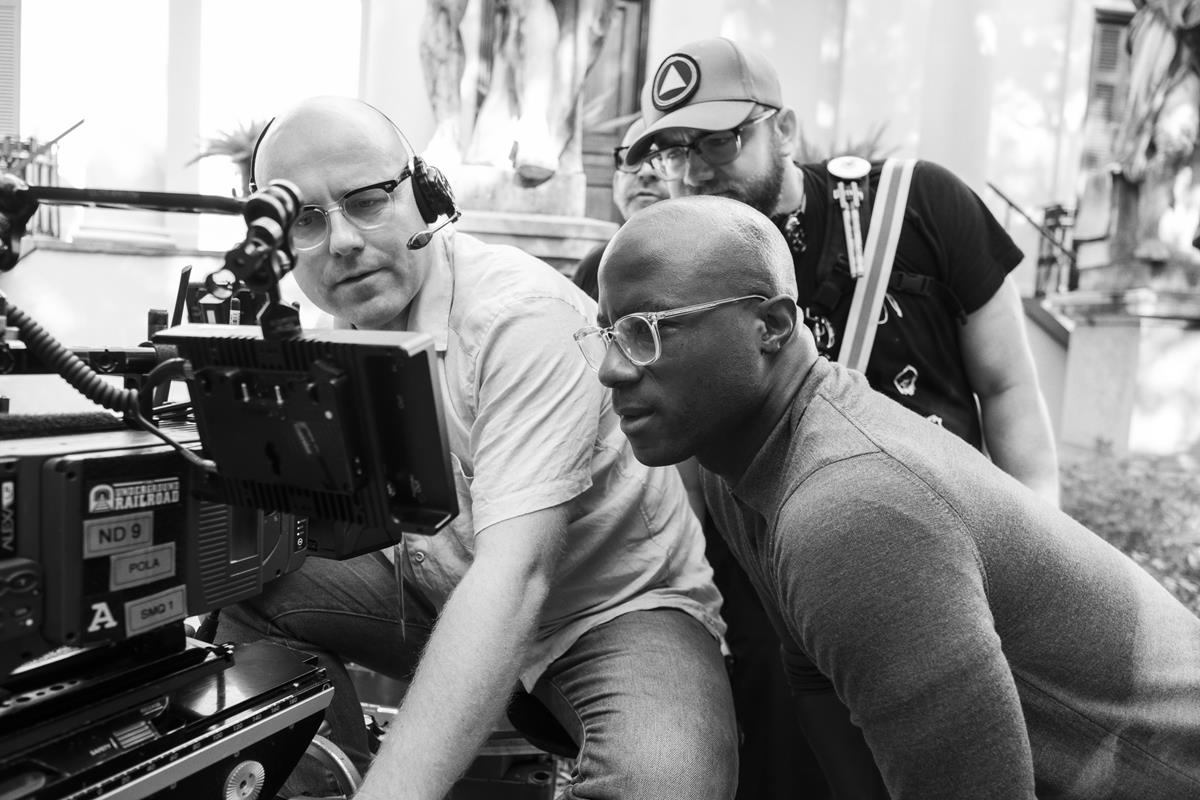
Jenkins and cinematographer James Laxton discussed how they approached violent sequences in The Underground Railroad in a sensitive yet truthful manner in an interview with Caleb Hammond for MovieMaker magazine.
“There were times where I thought it was going to kill me, I legitimately thought this is going to kill me. I’m not going to survive this,” Jenkins said.
“There’s a reason that typically you don’t have the same director directing 500 pages of a show. It’s really hard to maintain a certain quality level, because you can’t focus on every minute detail. There’s just too much information. I don’t know how the fuck James did it. I walk to set, I have to see what’s there, and then try to find a performance with the actors. And all this fucking infrastructure, the lights, the trailers — all this shit James has got to be plotting out. Then on the day, he has to be present. It’s so difficult. What is it: Random access memory, where the computer works in the background? You’ve got to have 64MB going in the background at all times, in order to make this work. I thought it was gonna kill me, I really did.”
“One thing that we try to do in general, but also applied to the violence here in this series, is to see things through characters’ perspectives,” Laxton said in the interview. “We felt if we could see even the violent moments from a perspective, it would actually mean something, as opposed to just objectifying some violent act.”
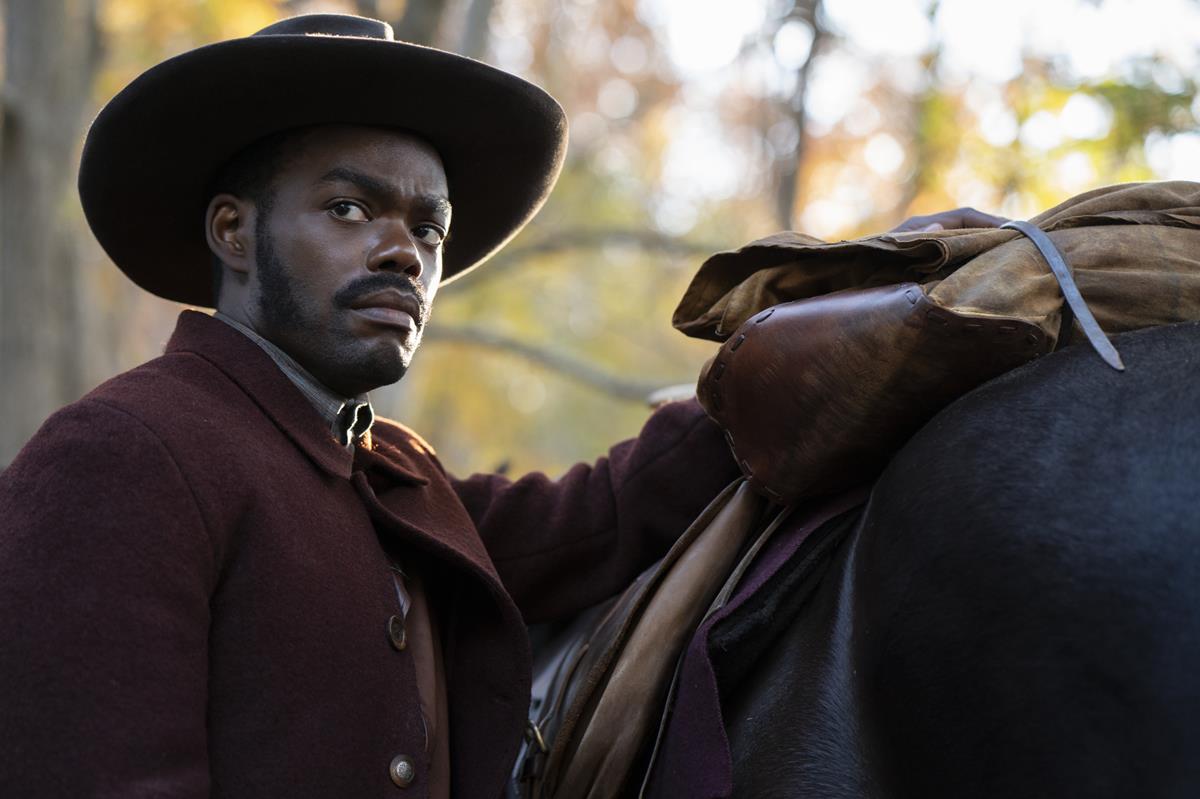
The imagery for The Underground Railroad is captured in long takes that contain shots within shots. As part of their freewheeling conversation with Hammond, The director and DP discussed their approach to the material.
“One of the first things in prep that I remember Barry saying many, many times over is he doesn’t want to cut,” Laxton said. “Clearly there’s many edits in the show. When a director says things so adamantly and so purposefully, there’s clearly something behind it. I would often think about what Barry is looking for when he talks about really wanting these things to play out.” The cinematographer continued:
“I thought, there’s something going on in this story with the mythology and symbology behind this underground railroad train. And yet we were telling a very true story of American history and Cora’s journey on it. There’s something about not wanting the audience to feel like they’re being tricked, or missing something or not wanting some sort of cinematic trickery to be disguising something that wanted to feel true. So the fluidity behind some of these camera moves, I assume always came from that concept of wanting to present a perspective to our audience that didn’t feel like we were leaning too heavily into the symbology of this train, but actually seeing it physically, panning from a character to straight up a moving physical train that we really physically did. We were lucky enough to film some real trains and some real actors adjacent to them. There’s something really powerful about that, as opposed to cutting to some crazy visual effect.”

“That’s it, man,” Jenkins agreed. “I sometimes feel like when there’s a cut, I can feel the manipulation. And it’s all artifice — we’re creating all of it,” he said, adding:
“But, every edit where you cut to a new piece of media is a whole separate moment in time. So the longer you can extend a moment in time, the more grounded, the more visceral that is. James is absolutely right, we have this train that’s a personification of the actual Underground Railroad. When I was a kid, and I first heard the words, ‘Underground Railroad,’ that shit felt real. I literally imagined Black people on trains underground that they built. So I wanted to find a way to get whatever extra artifice out of each shot that we could. With some of the stuff James and I have done over the last two films, there’s something moving — as opposed to using an edit to juxtapose an image, just like we do as human beings, where one piece of information draws your attention to another piece of information — and so instead of cutting to another shot, let’s create another shot with the camera.”
READ MORE: The Underground Railroad Director Barry Jenkins Talks With DP James Laxton: ‘This Is the Hardest Thing I’ve Ever Done’ (MovieMaker)
Laxton’s partnership with Jenkins goes back to their days as roommates at Florida State, with Laxton serving as Jenkins’ “closest artistic collaborator since,” Reggie Ugwu noted in The New York Times.
“At the end of the day, I would go home and have a think and have a cry as my own sort of way to cope,” Laxton said to Ugwu. “To walk around in a space where people are dripping with blood from being whipped or hung or mutilated in some way, to have to talk to them, like, ‘Can you step to your right to be on your mark a little bit more?’ That clearly takes a toll.”
He added, “Dealing with what we saw will probably stick with me for a very long time, if not forever. But I hope these images stick with the people who see this show, too, because it’s important for us all to recognize our history.”
READ MORE: The Epic Journey to ‘The Underground Railroad’ (The New York Times)
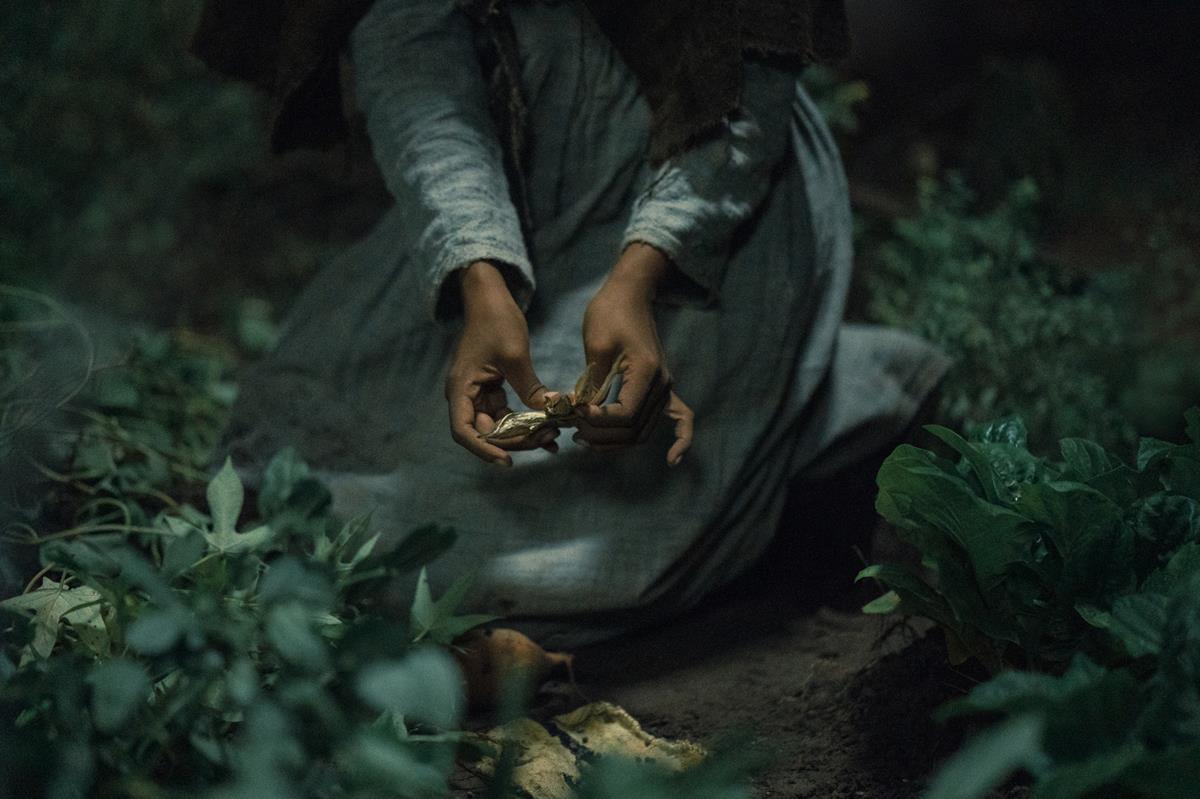
Laxton employed Arri ALEXA LF and ALEXA Mini LF cameras to capture footage for The Underground Railroad, performing extensive testing with Panavision’s Dan Sasaki to tweak the Primo 70 series and T-Series Anamorphics to his specifications.
“Our job as filmmakers was to paint with a fine brush nuanced scenes of Cora falling in love or having fun at a corn-shucking festival on Valentine Farm,” the cinematographer said to Valentina Valentini in an interview for ICG Magazine.
“It was no small task to create entirely disparate locales using existing locations in Georgia, but Laxton and his team, cognizant that new characters and new spaces alone wouldn’t cut it, also helped to build separate visual worlds by treating the color palette differently in each state and creating a unique LUT for each episode,” Valentini writes:
“Starting with Chapter 1, ‘Georgia,’ Laxton and his longtime colorist, Alex Bickel, at New York City-based Color Collective, used a Kodak emulation; for Chapter 2, ‘South Carolina,’ it was an Anscochrome LUT with E6 chemicals to emulate the same combination of stock and processing Still Photographer Gordon Parks used in his Segregation Story series….
“Chapter 3 and Chapter 7, both set in North Carolina, used a Fuji Film LUT; Chapter 4, ‘The Great Spirit’ was Ektachrome; ‘Tennessee: Exodus’ was three-strip Technicolor with a modified white point based on Erwin Olaf’s Keyhole series; and for ‘Tennessee Proverbs,’ back to Ektachrome. Chapter 8 ‘Indiana: Autumn’ was Technicolor three-strip again but modified to emulate blues and greens in reference to photographer Jacques Henri Lartigue; ‘Indiana: Winter’ was Agfa; and finally, for Chapter 10, ‘Mabel,’ the filmmakers used two different LUT’s — the first half of the episode was Bleached Kodak, and the second half was Ektachrome with inkier blacks. Because of Laxton and Jenkins’ feature-film background, they were keen to preserve a cinematic language even while working on a TV series together for the first time. And Bickel, who has colored all of Laxton’s features, helped to maintain a visual through-line in post.”
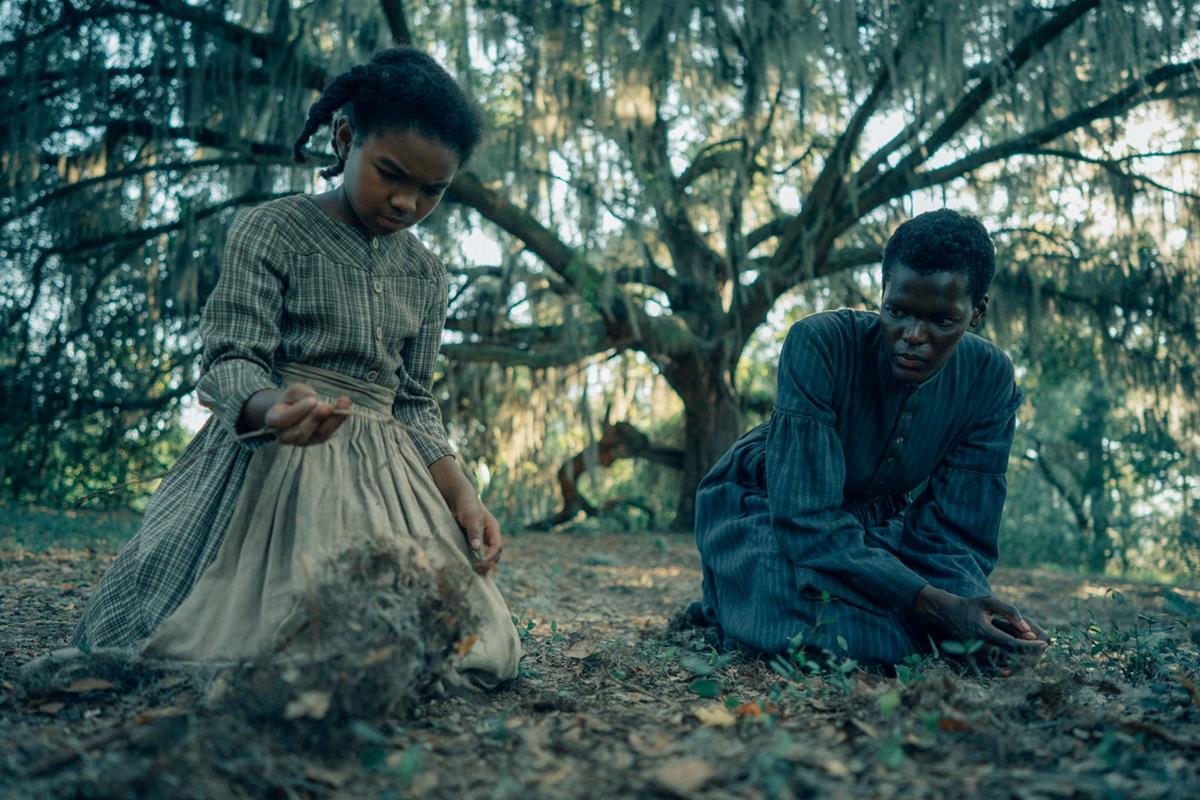
READ MORE: Black Like Me (ICG Magazine)
Speaking with IndieWire, Laxton said “heightened but true” was a guiding principle in creating the distinct looks for each episode of The Underground Railroad. “When working with Barry, what you get is this license to lean heavily into your craft,” he said. “We’re only able to do that because he tells stories that need that from us. It’s one of my favorite parts about working with him.”
But any heightened elements also had to be grounded in reality, Laxton said:
“When you are dealing with these elevated and fantastical elements, there’s fear in me, and I assume a fear in Barry as well, that we were going to dip our filmmaker hand too far down into the depth of making images that didn’t feel believable. The camera pans and moves from one character to another character, or one character to a train, always in service of trying to make sure these images feel heightened in their sensibilities, but need to feel desperately true to our audiences.”
READ MORE: Crafting the Stunning Visual Worlds of ‘The Underground Railroad’ (IndieWire)
In a collaborative effort such as filmmaking, a multitude of crew members contribute a variety of skills that make the whole enterprise possible. But for The Underground Railroad, one crew member, in particular, stood out. During production, therapist Kim Whyte was hired to help the cast and crew members process their emotions in order to create a safe environment on set.
Jenkins discussed the therapist’s role during a wide-ranging conversation recorded for The Hollywood Reporter with Nikole Hannah-Jones, creator of The New York Times’ The 1619 Project.
Initially, Jenkins eschewed any need for Whyte’s services. “I thought, you know, ‘I’m a real smart cat. I’ve been doing this for 20 years, there’s a crew, there are actors, and I know exactly what we’re doing. And I know that nothing I’m going to deal with is even remotely comparable to what my ancestors dealt with.’ And yet we’re in the same actual spaces,” he said.
“I do believe that somehow, you know, [we were on] the same soil, and it would catch up to me. There was a day when I just walked myself off set and said nothing to nobody — which is very expensive on a show this big. When I’m not present, nothing happens. There was another day we had a guidance counselor. She tapped me and then pulled me off my own set. I said, ‘Yo, you can’t pull me off set, man! I’ve got to be strong for the crew. They see me talking to you, man, they go, Something is wrong. She was like, ‘Yeah, you’ve got to be strong for them, but who’s going to be strong for you when you break down?’ And so we had a little session, I unleashed some things, and then I got back to it.”
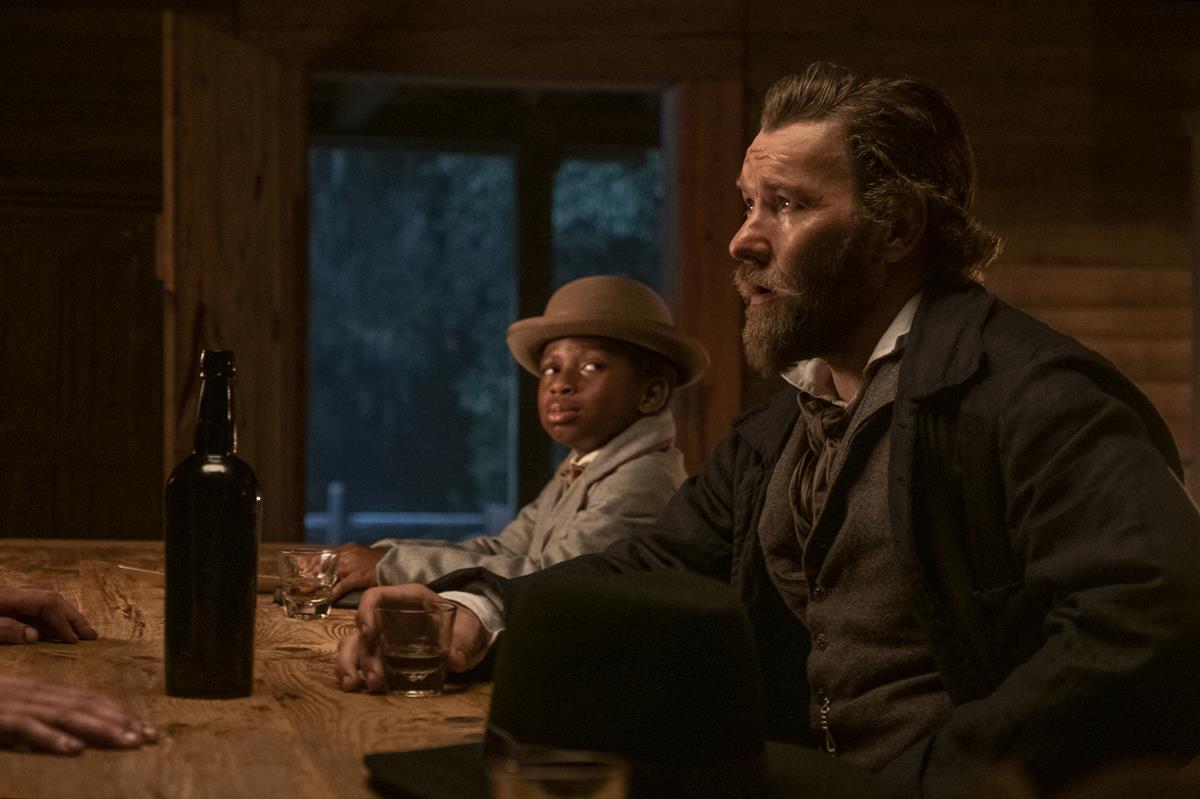
READ MORE: THR Talks: Barry Jenkins and Nikole Hannah-Jones on the Nuances of Storytelling and Trauma (The Hollywood Reporter)
One surprising influence on The Underground Railroad is “a slice of Soviet sci-fi,” Ben Travis writes in Empire. Andrei Tarkovsky’s final film, the 1979 Stalker, which is based on the novel “Roadside Picnic” by the Strugatsky brothers, was apparently the only film Jenkins allowed himself to rewatch while working on the series.
“I was sitting in my apartment and Criterion Channel comes up — I don’t know if it was a trailer or just a snippet of Stalker,” Jenkins recalled to Travis. “And I just forgot how much it is about these men on this train. They even go underground for a little bit. But they’re journeying into this alternate reality.”
READ MORE: The Underground Railroad: Director Barry Jenkins Talks Tarkovsky Inspiration And The Series’ ‘Honest Images’ (Empire)
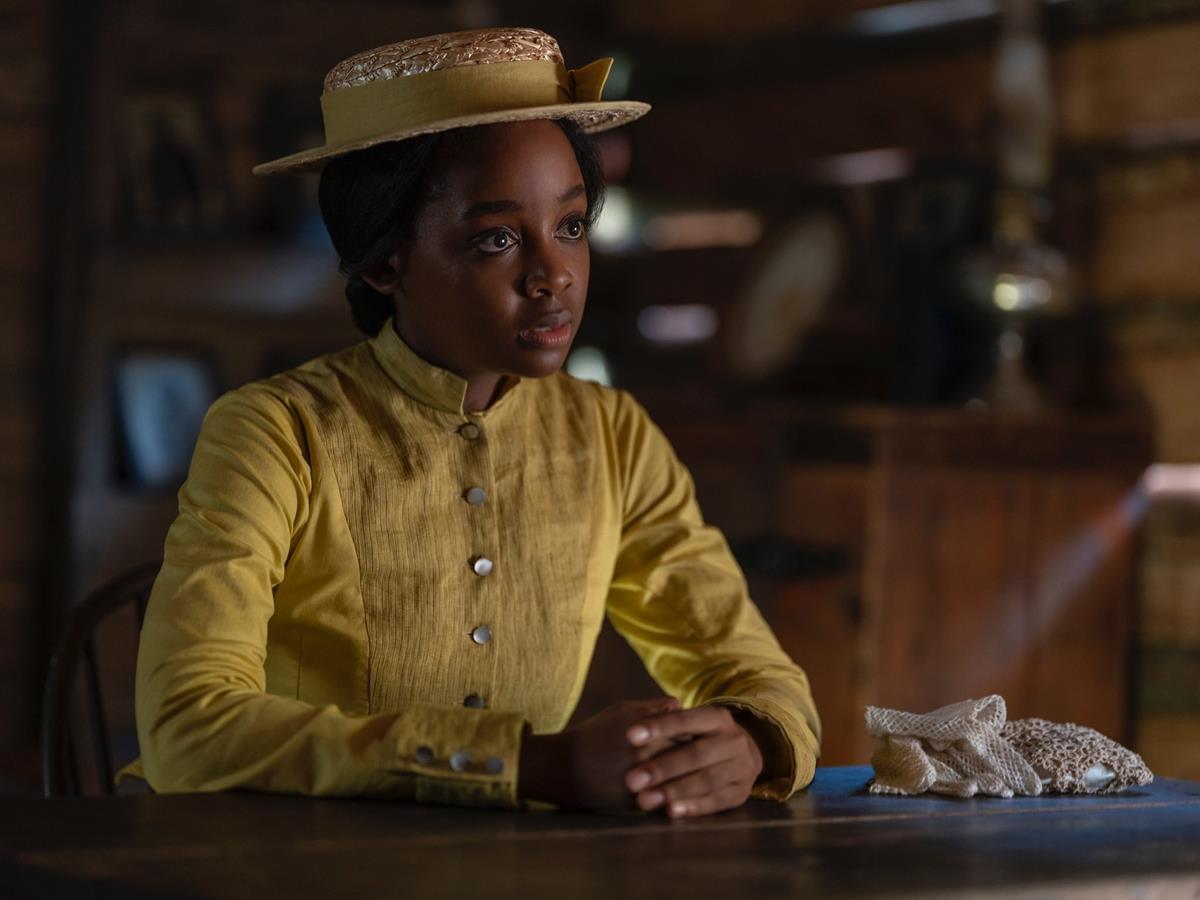
Ahead of the series premiere on Amazon Prime Video, Jenkins released a non-narrative short made in parallel while shooting The Underground Railroad. As Jenkins explains in his introduction to the 52-minute video, titled The Gaze, the short is not meant to be viewed as an episode of the series but as a related project inspired by it.
“In my years of doing interviews and roundtables and Q&A’s for the various films we’ve made, there is one question that recurs,” Jenkins comments in a director’s statement. “No matter the length of the piece or the tone of the room, eventually, inevitably, I am asked about the white gaze. It wasn’t until a very particular interview regards The Underground Railroad that the blind spot inherent in that questioning became clear to me: never, in all my years of working or questioning, had I been set upon about the Black gaze; or the gaze distilled.”
Watch The Gaze in the player below:
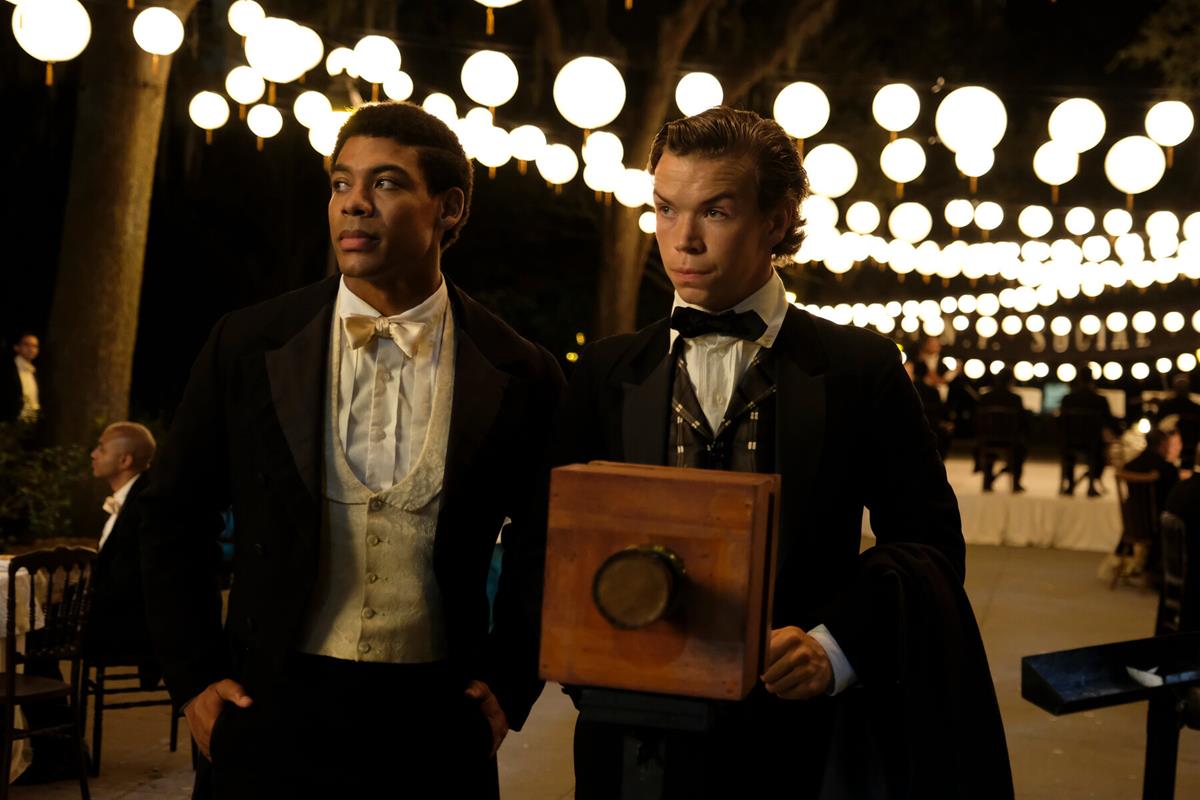
Want more? Listen to Jenkins discuss five key scenes from The Underground Railroad in the Film Comment podcast with Film Comment editors Clinton Krute and Devika Girish:
Watch “A Conversation with Barry Jenkins, Thuso Mbedu, and Ta-Nehisi Coates” from Amazon Prime Video, in the player below:
Explore IndieWire’s “Craft Considerations” series, which includes Crafting the Stunning Visual Worlds of ‘The Underground Railroad,’ featuring DP James Laxton, production designer Mark Friedberg, and costume designer Caroline Eselin-Schaefer as they break down key moments of their craft, and Crafting the Sound and Rhythms of ‘The Underground Railroad’ with insights from editor Joi McMillon, composer Nicholas Britell, and sound supervisor Onnalee Blank:


